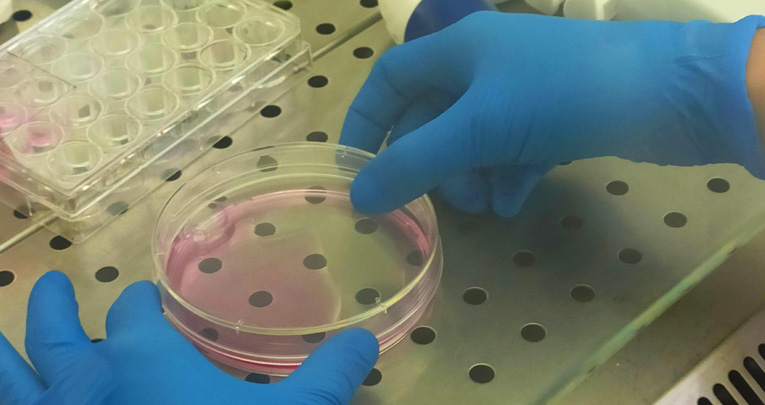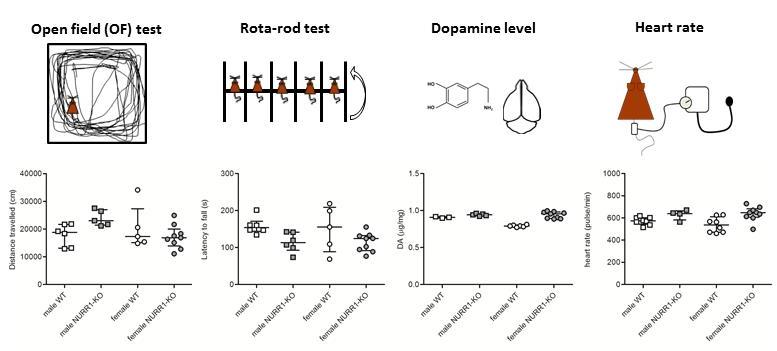
Journal of Neuroscience Research
, 20 May 2022
NURR1-deficient mice have age- and sex-specific behavioral phenotypes
Francesca Montarolo 1,2,3 , Serena Martire 2 , Francesco Chiara 4 , Sarah Allegra 4 , Silvia De Francia 4 , Eriola Hoxha 1,5 , Filippo Tempia 1,5 , Marco Alfonso Capobianco 1,2 , Antonio Bertolotto 1
Research group NICO: Clinical Neurobiology
The transcription factor NURR1 is essential to the generation and maintenance of midbrain dopaminergic (mDA) neurons and its deregulation is involved in the development of dopamine (DA)-associated brain disorders, such as Parkinson's disease (PD). The old male NURR1 heterozygous knockout (NURR1-KO) mouse has been proposed as a model of PD due to its altered motor performance that was, however, not confirmed in a subsequent study.
Based on these controversial results, we explored the effects of the NURR1 deficiency on locomotor activity, motor coordination, brain and plasma DA levels, blood pressure and heart rate of old mice, also focusing on the potential effect of sex . As a probable consequence of the role of NURR1 in DA pathway, we observed that the old NURR1-KO mouse is characterized by motor impairment, and increased brain DA level and heart rate, independently from sex.
However, we also observed an alteration in spontaneous locomotor activity that only affects males. In conclusion, NURR1 deficiency triggers sex- and age-specific alterations of behavioral responses, of DA levels and cardiovascular abnormalities. Further studies in simplified systems will be necessary to dissect the mechanism underlying these observations.
read more, open access article
Graphical abstract
A - Male NURR1-KO mice are hyperactive compared to wild-type mice(WT) at the open field test.
B - NURR1-KO mice, both males and females, show motor impairment at the rota-rod test.
C - NURR1-KO mice, both males and females, have higher brain DA levels compared to WT.
D - NURR1-KO mice, both males and females, show an increased heart rate compared to WT.
1
Neuroscience Institute Cavalieri Ottolenghi (NICO), Orbassano, Italy
2
Neurology Department and Regional Referring Center of Multiple Sclerosis (CReSM), University Hospital San Luigi Gonzaga, Orbassano, Italy
3
Department of Molecular Biotechnology and Health Sciences, University of Turin, Turin , It aly
4
Department of Biological and Clinical Sciences, University of Turin, AOU San Luigi Gonzaga, Orbassano, Italy
5
Department of Neuroscience “Rita Levi Montalcini”, University of Turin, Turin, Italy








